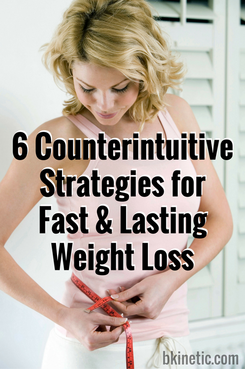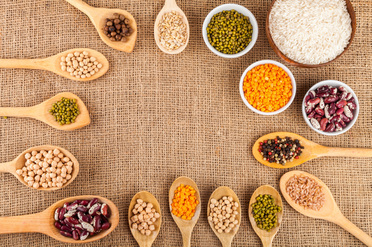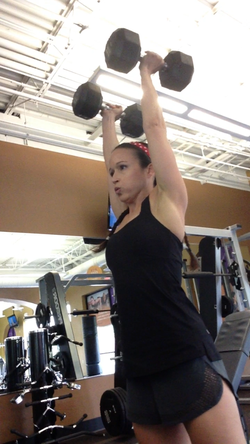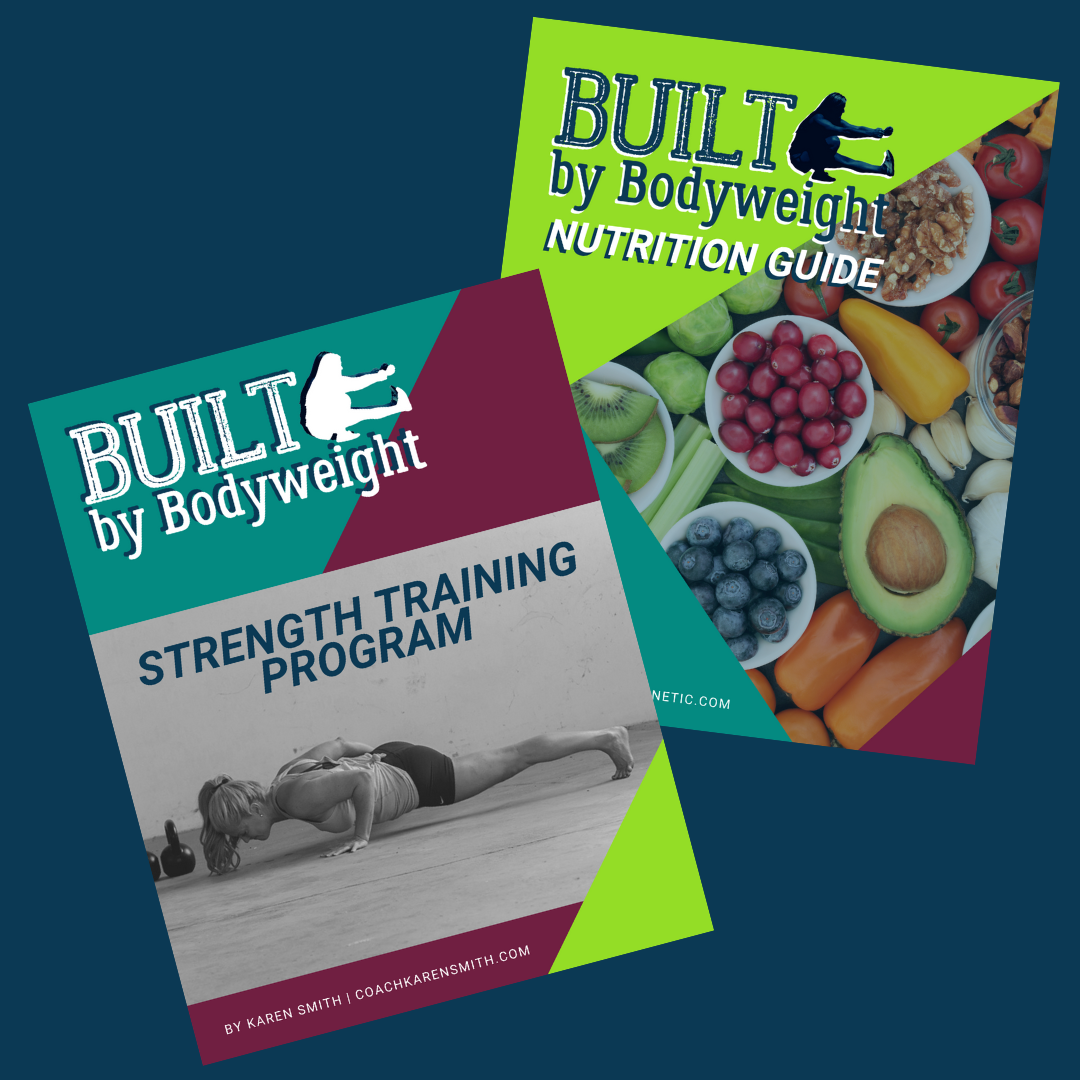This is when it helps to look for another way. To do something that seems at its surface to go against the grain of conventional wisdom.
But then again, sometimes conventional wisdom gets it all wrong. Or, at the very least, wrong for us.
If you’re ready to try something different, read on.

1. Eat Carbs
The practice of drastically cutting carbs has been all the rage over the past 2 decades or so. It has become the go-to tactic when it comes to losing weight.
And that’s not necessarily a bad thing, as many of us eat too many and the wrong types of carbs for our activity levels and goals. And it’s so very tempting to lose a few lbs. right off the bat (mostly water weight though). But it’s very easy to overdo it.
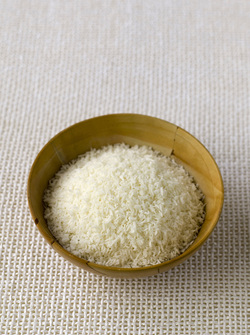 Carbs play a very important role in our diet – they give us quick energy, as glucose is the fuel that our brains and bodies need and use most readily. They also help build muscle.
Carbs play a very important role in our diet – they give us quick energy, as glucose is the fuel that our brains and bodies need and use most readily. They also help build muscle.
But cutting carbs really low can cause a variety of unpleasant side effects: fatigue, irritability, insomnia, lowered metabolic rate, increased stress hormones, suppressed immune function, and impaired thyroid function. Women seem to be more sensitive to the effects of a lack of carbs, particularly with hormone regulation.
A good goal is to eat as many carbs as possible while still seeing results. This will help keep your performance in the gym at a good level, help prevent undue hormonal imbalances due to prolonged dieting, and give you something to play with if you hit a plateau.
If you start a diet at 25-50 grams of carbs a day or less. Then you don’t have a whole lot of wiggle room down the road. You can only drop your carbs down so low before it becomes counterproductive and miserable.
Start by tracking your food for a few days and then cut out one serving of a starchy or processed carb source (pasta, rice, cereal, granola bars, bread, etc.). After 2 weeks or so, assess how you feel (appetite, cravings, energy) and any results that you’re seeing before making any changes (if it ain’t broke, don’t fix it!). Of course, ideally you’ll want to get the vast majority of your carbs from fibrous produce and healthy starches. But you don’t have to completely overhaul your diet right away.
2. Skip the Cardio
Gasp! No cardio?!? That’s just crazy talk!
 Yes, I am completely serious. And I used to be a cardio queen back in the day, running, elliptical-ing, cycling, kickboxing, stair-climbing till the cows came home.
Yes, I am completely serious. And I used to be a cardio queen back in the day, running, elliptical-ing, cycling, kickboxing, stair-climbing till the cows came home.
I thought that’s what I had to do to lose weight and maintain it – 45 to 90+ minutes a day, 5-6 days a week, week in and week out. I was able to keep that pace up in my teens and twenties fairly easily. But now that I’m 37, I need far more recovery and smarter training.
Traditional cardio, like moderate-intensity steady state jogging or spin classes, should be treated as frosting on top of the cake, not the main dish. It’s a not-entirely-necessary but tasty addition in the right dosage. Sometimes it really enhances it, but other times it’s just too much.
The reason for this is three-fold. First, weight training is far more effective and efficient for fat loss (I’ll discuss this more below). Second, cardio tends to jack up cravings and appetite, leading to overeating and canceling out any calorie burn and then some. And third, your body will adapt to the volume of exercise that you do, and thus burn fewer calories for the same amount of work. So that 3 miles that you run every single day will boost your stamina (yay!) but will burn fewer calories (boo!).
And there is only so much exercise that you can do before it starts to be counterproductive and interferes with your recovery and lifestyle.
So the key is to be conservative with your cardio and only sprinkle it in as necessary to see continued results. It is simply one tool out of many for fat loss, and certainly not the most important one.
As with anything, program your cardio according to your goals. If your priority is losing fat, do as little as possible and focus on nutrition and lifting weights first and foremost. But if your main goal is to do a 10k or a half-marathon, then by all means do as much as your training plan calls for to accomplish that mission.
The one form of cardio that I wholeheartedly recommend to everyone? Leisure walking.
It’s fantastic for stress management (we can all do with some of that!), especially if you do it outdoors among nature. It does burn a few calories, but more importantly, it activates our parasympathetic nervous system, slowing down our heart rate and increasing digestion (also known as the “rest and digest system”). This greatly enhances our recovery from exercise and the stresses of daily life.
3. Order Dessert
I can hear all of you fellow choco-holics out there cheering yaaassss!!! Usually dessert and sweets are the first to go when dieting. And with good reason, as they are usually sugar/starch/fat bombs, which makes it more likely to be stored as fat.
Buuuuutttt….. Completely depriving ourselves of something we really enjoy over a long period of time usually backfires. It’ll become all we think about, because it’s something that we can’t have.
It steals our willpower, so even if we don’t give in to that temptation, we’ll struggle with everything else, whether that’s drinking more water, eating more veggies, or getting to the gym regularly. Pretty soon, even the most stoic of us will give in big-time somewhere, and we all know how crappy that feels.
So pick a few things that will satisfy your sweet tooth (or whatever else you crave the most) but won’t completely derail your efforts. For me, it’s dark chocolate, sugar-free fro-yo or Halo Top ice cream, and chocolate chip cookie dough Quest protein bars. I keep the portions appropriate (no binging) and, depending on my goals, I enjoy one of them a few times a week or even once a day.
Every once in a while, go ahead and share a dessert with a friend or loved one. Savor a few bites and then move on.
However, if you have a trigger food (something that you know you can’t eat just a small portion of and causes even more cravings), then avoiding that would be wise.
The goal here is to create built-in buffers against feelings of deprivation, in addition to cultivating a nutrition strategy that we can use for life, not just for 12 weeks.
4. Take a Bath
Throw in some Epsom salts and essential oil (like lavender, eucalyptus, or peppermint) and get to relaxing and recovering.
Although stress has no calories, it can certainly make us gain stubborn weight. One of the hormones that surge during times of stress is cortisol. But cortisol is like anything else in our bodies, it can be a negative or a positive force. We already know it as a fat-storing hormone. However, it can also be a fat-burning hormone.
We just tend to have too much of it in response to the chronic, daily stressors of modern living coupled with a lack of quality exercise, sleep, and diet. Although acute elevations in cortisol help burn fat, such as during high intensity interval-style exercise and strength training, excess prolonged elevations in cortisol can stimulate fat storage. It can also lead to muscle loss in the absence of muscle-building hormones (another great reason to lift weights!).
Managing stress is a key, but often overlooked, piece of the fat loss puzzle because of the effect it has not only on the body in general (muscle tension, headaches, etc. leading to lackluster or missed workouts and deviation from diet) but also on many of our hormones. An imbalance of vital hormones, such as cortisol, testosterone, and estrogen, throws fat loss into a tailspin. More calories are stored as fat, less muscle is built, muscle is broken down, and strength and energy levels suffer.
I can personally attest to this, as my current health struggles largely stem from chronic stress and hormonal imbalances. As a consequence, I’m about 15 lbs. over my normal weight, forcing me to buy clothing 1-2 sizes larger than I normally wear. Definitely not fun, but I know that if I focus on stress management and getting good quality sleep, along with following my doctor’s treatment plan, I’ll be back on track to get my physique and fitness back.
Stress can make our hunger hormones get out of whack as well, making it seem as though we have suddenly developed a bottomless pit for a stomach. It’s not your imagination that you crave more sweet and fatty foods when you’re stressed. One of the biggest struggles that I hear from women is dealing with night time munchies and cravings. Too many snacks after dinner can wipe out an entire day of good eating, calorie-wise.
So put your phone away and chillax in the tub with a good book (there’s a few good ones listed below). Enjoy some much-needed “me time.” And if baths aren’t your thing, then anything that relaxes and recharges you can work. You deserve it!
5. Lift Some Heavy Shit
Building strength and muscle is not just for bodybuilders. It is a critical component of fat loss and overall health.
Sadly, as we age, we lose precious lean muscle. On average, women lose 5 pounds of muscle mass per decade between age 25 and 65, leading to a 2-4% decline in metabolic rate with each decade as well.
Muscle is what really transforms your body, giving you the “tight and toned” look. Sparing muscle during a fat loss phase is especially important. When deprived of adequate calories, our bodies will take fuel from wherever it can – muscles, fat stores, and glycogen stores (readily available sugars/carbs).
And when we lose a significant portion of muscle in addition to fat, we may get smaller, but we’ll most likely have the same shape. Plus, we’ll be burning fewer calories throughout the day, which will make weight regain much more likely.
Consistent weight training ensures that less muscle tissue is used for fuel and that even more is built over time. The more muscle you have, the more calories you burn at rest. The “afterburn effect”, also known as Excess Post-exercise Oxygen Consumption (EPOC), also contributes to the increase in calories burned after the workout. The body increases oxygen use after exercise to bring various processes back to baseline and to recover. This process takes energy (ie: calories). The specific amount is unknown and debatable, but every little bit helps.
Plus, the mental benefits and amazing sense of empowerment that comes from lifting weights tends to carry over into other areas of our lives, improving our overall quality of life. Lifting weights gave me the confidence to go after a walk-on position on the soccer team in college, compete in a bodybuilding competition (I was still terrified!), and pursue a new line of work as a personal trainer 9 years ago, building an online business in the process.
And lifting “heavy” doesn’t just apply to the load (weight used). It can also apply to bodyweight training. You can do challenging variations of exercises, adding pauses or slowing down the tempo (speed), or changing other variables like I mention in this IG post.
Built By Bodyweight, the strength training and nutrition program I co-created with StrongFirst Master Instructor Karen Smith, is now on sale!
Karen designed a 12-week bodyweight program that will build your strength, confidence, and fitness in just 3 workouts a week. I wrote the nutrition program that features everything from food intake, hormones, stress, sleep, habits, mindset, and much more! It’s everything that I teach my 1:1 coaching clients for a fraction of the price.
Get it here >>> builtbybodyweightprogram.com
6. Read a Book
Who has time to actually sit down and read a book these days, right? Fair enough, but allow me make my case. When we seek to make a change in our lives, it helps to get our minds right first.
Everything we do is connected to our mindset, for better or worse. Our success is intricately tied to whether or not we can harness of the power of our thoughts and underlying beliefs. Anyone who has ever struggled with emotional eating or self-sabotage knows what I’m talking about.
Grabbing a carefully selected book can help us to gain a new perspective, make some critical mindset shifts, and inspire us to keep going when things get tough.
A few of my top picks:
Mindset: The New Psychology of Success by Carol Dweck
Dweck explains why it’s not just our abilities and talent that bring us success — but whether we approach them with a fixed or growth mindset. A growth mindset allows us to see obstacles as necessary challenges and as opportunities for learning, not road blocks to stop us in our tracks.
The Willpower Instinct by Kelly McGonigal
This book discusses not only the science of self-control, but also includes simple actionable tips to increase it. Read a chapter a week and put her tactics into action.
Grit: The Power of Passion and Perseverance by Angela Duckworth
Psychologist Duckworth shows anyone striving to succeed — be it parents, students, educators, athletes, or business people—that the secret to outstanding achievement is not talent. But a special blend of passion and persistence she calls “grit.” So even if you don’t have an athletic bone in your body, you can still learn to kick butt at fitness.
The Obstacle is the Way by Ryan Holiday
The inspiration for this book comes from the ancient Greek philosophy of stoicism – enduring pain or adversity with perseverance and resilience. It’s about focusing on the things we can control, letting go of what we can’t, and turning every obstacle into an opportunity to get better, stronger, tougher.
We all feel frustrated, overwhelmed, and demoralized from time to time, especially when we’re trying to level up in some area in our lives. It just comes with the territory. What separates the winners from the losers is the ability to acknowledge the negative emotions and challenges, and push on despite them. As the wise Marcus Aurelius wrote all those years ago: “The impediment to action advances action. What stands in the way becomes the way.”
On My Own Two Feet by Amy Purdy
On the cusp of her twenties, the author contracts bacterial meningitis, resulting in having both legs amputated at the knee. Years later, she now snowboards competitively, earning a medal in the 2014 Paralympics. She also competed on Dancing With The Stars. Her journey is a testament to the resilience of the human spirit and the capacity we all have to dream bigger, defy expectations, and rewrite our stories.
The right book can be a total gamechanger. And if you’re a busy multi-tasker, check out Audible.com (get a free 30-day trial and 2 free audiobooks to start via this link). Listening to audiobooks during your commute, a workout, or while doing housework is a great way to learn and be inspired if you’re short on time and energy.
Wrapping things up….
It’s totally understandable if you’re a bit hesitant to take on these tactics. We’ve been all but brainwashed by the mainstream media for so long to throw ourselves headlong into an intense cardio routine, slash our carb intake, and deprive ourselves of every bit of delicious food that we love. But isn’t it time to try a new way? A less restrictive, miserable way?
You don’t have to do all 6 strategies at one time. Pick one that appeals to you and see how it goes. Experiment and try to have fun with the process. There are no hard and fast rules, just what works for you. Sometimes you have to dare to take a more unusual approach to get the results that you want.

